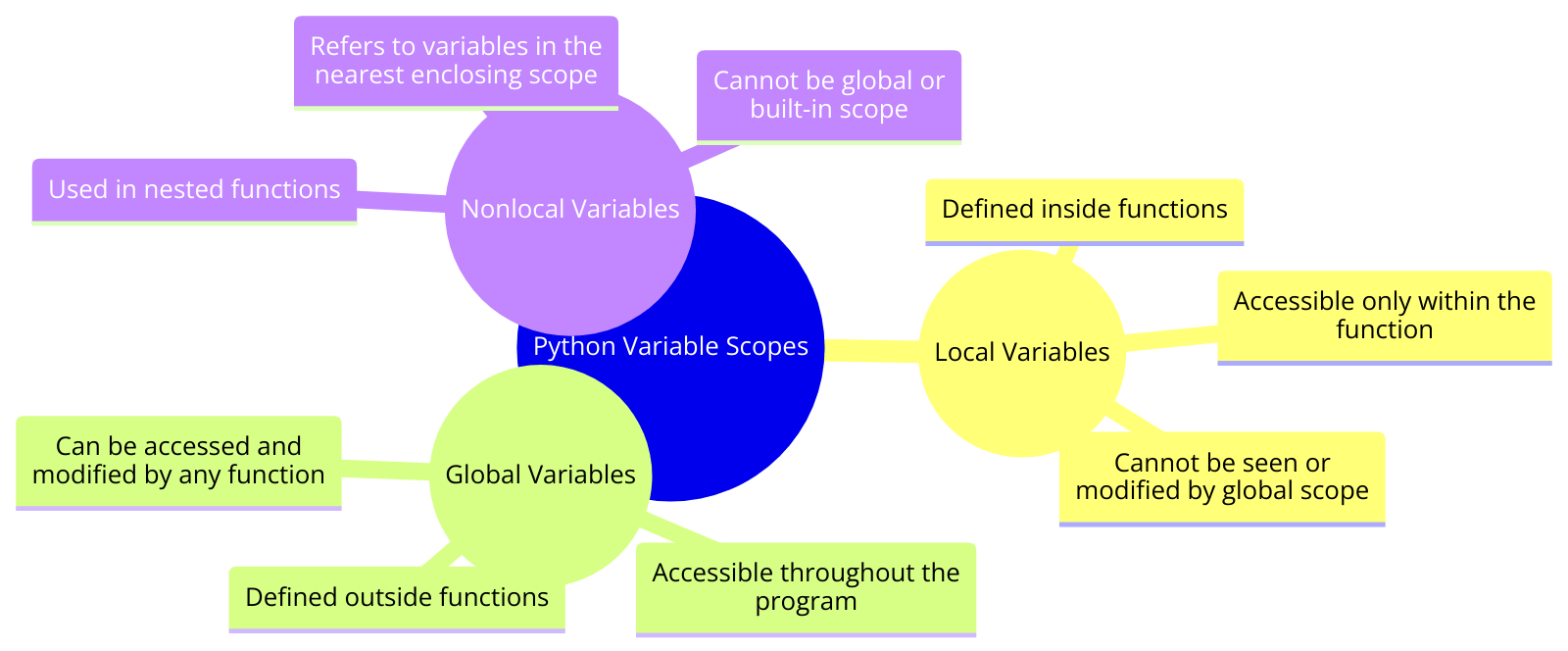Understanding variable scopes in Python is crucial for writing efficient and error-free code. Variable scope refers to the part of the program where a variable is accessible. Python has three main types of variable scopes: local, global, and nonlocal. Let’s dive deep into each type with examples, common mistakes, and best practices.
Local Scope
Definition & Examples:
A variable declared inside a function belongs to the local scope of that function and is only accessible within the function.
def my_function():
local_variable = "I am local"
print(local_variable) # Output: I am local
# print(local_variable) # This will raise an error
Common Mistakes:
- Trying to access a local variable outside its function.
- Overlooking variable shadowing, where a local variable has the same name as a global one.
Best Practices:
- Use clear, descriptive names for local variables to avoid confusion.
- Limit the use of global variables if a local variable suffices.
Global Scope
Definition & Examples:
Variables declared at the top-level of a script or module or explicitly declared global within a function, have a global scope.
global_variable = "I am global"
def my_function():
print(global_variable) # Output: I am global
my_function()
Common Mistakes:
- Unintentional modification of global variables within functions.
- Over-reliance on global variables, leading to code that’s hard to debug.
Best Practices:
- Minimize the use of global variables.
- Explicitly declare a variable as global within a function if it needs to modify a global variable.
Nonlocal Scope
Definition & Examples:
Nonlocal variables are used in nested functions. They refer to variables in the nearest enclosing scope, excluding globals.
def outer_function():
outer_variable = "I am outer"
def inner_function():
nonlocal outer_variable
outer_variable = "I am nonlocal"
print(outer_variable)
inner_function()
print(outer_variable) # Output: I am nonlocal
outer_function()
Common Mistakes:
- Confusing
nonlocalwithglobal. - Using
nonlocalin a scope where the variable does not exist.
Best Practices:
- Use
nonlocaljudiciously, primarily when dealing with nested functions. - Ensure the variable exists in the nearest enclosing scope when using
nonlocal.
Tips and Tricks
- Remember the LEGB Rule: Local, Enclosing, Global, Built-in. It’s the order Python searches for variables.
- When in doubt, keep your variables local.
- Use globals sparingly and carefully.
- Understanding closures and decorators requires a grasp of nonlocal scopes.
Conclusion
Mastering variable scopes in Python enhances your programming skills, leading to cleaner, more efficient code. By understanding the nuances of local, global, and nonlocal variables, you can avoid common pitfalls and follow best practices.genre





No comment